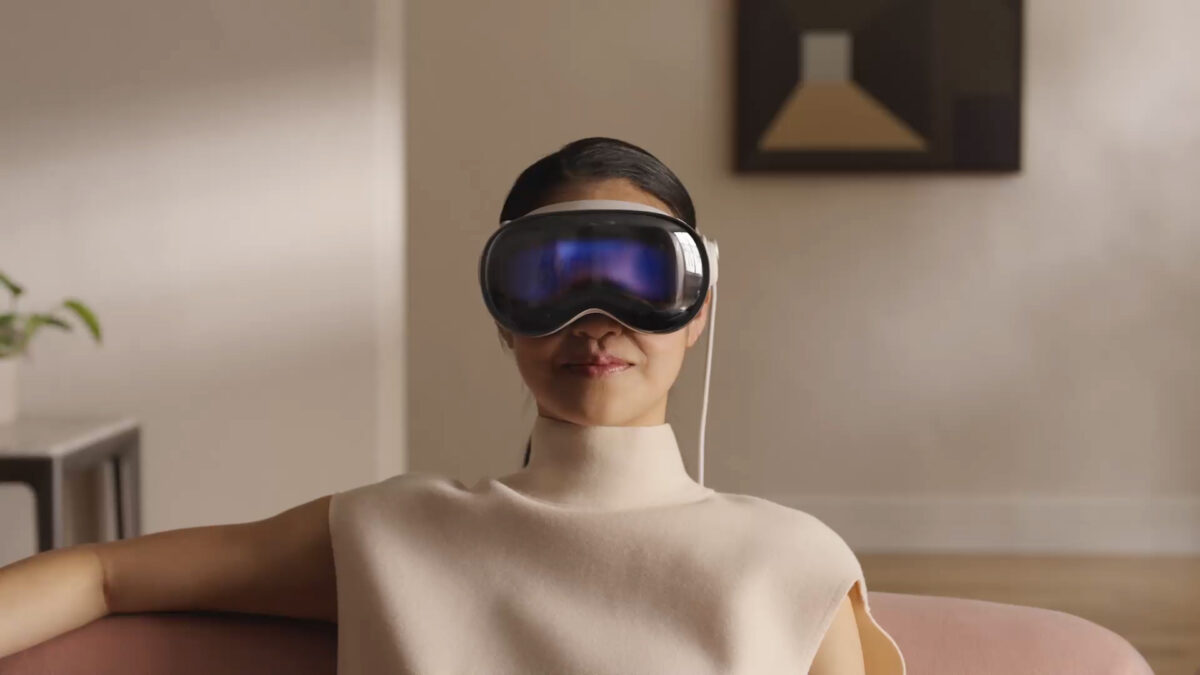Apple’s Vision Pro headset, introduced with high expectations, is navigating a turbulent path as it competes against Meta’s aggressive advancements in augmented and virtual reality. Initially unveiled as a premium mixed-reality device, the Vision Pro has been marketed as a cutting-edge technology showcase. However, Bloomberg’s Mark Gurman recently noted that the product lacks a solid foundation to support its intended trajectory as Apple aims to evolve it into a full line of devices.
The Vision Pro’s biggest challenge is not just technical—it’s the price. At $3,500, the Vision Pro sits far beyond what most consumers are willing to spend, especially when considering alternatives like Meta’s latest Quest 3S, which starts at $299. Meta’s recent unveilings, including the Ray-Ban smart glasses and the Orion AR glasses prototype, further intensify the competitive pressure. While Meta’s products may not boast the same level of technological sophistication as the Vision Pro, they have resonated with consumers thanks to their more accessible pricing and practical features.
Apple, by comparison, finds itself on the defensive. The Vision Pro, while impressive from an engineering perspective, faces criticism for being more of a “showpiece” than a consumer-friendly product. Gurman suggests that Apple is at a crossroads, needing to rethink its approach to headsets. The company has reportedly considered multiple directions, ranging from creating a lower-cost version of the Vision Pro to developing something closer to Meta’s Ray-Ban smart glasses, which don’t rely on augmented reality but offer audio and video integration.
The Apple Vision Pro is now more than 10 times the price of the entry-level Quest offering, and it’s certainly not 10 times better. If gaming and video watching are the main applications for these types of headsets, you really don’t need the Vision Pro’s sophistication.
Moreover, Meta’s Orion AR glasses prototype, with its sleek design and ambitious field-of-view capabilities, has been hailed as a glimpse into the future of augmented reality. While still several years away from being consumer-ready, it has already captured the imagination of tech enthusiasts and raised questions about Apple’s long-term vision in this space. Gurman notes that Apple has experimented with similar concepts but has been more cautious about releasing early prototypes, focusing instead on refining its product before launching it to the public.
Internally, Apple’s Vision Products Group is evaluating several options for the next phase of its headset strategy. One path is introducing a less expensive version of the Vision Pro, possibly called “Vision Lite.” This device could use cheaper materials and scaled-back technologies, with lower-resolution displays to reduce costs. Alternatively, Apple could shift towards creating a smart display that offloads computational tasks to the iPhone, reducing the weight, heat, and price of the headset. Another option is to develop smart glasses without full AR capabilities, which would compete directly with Meta’s Ray-Ban glasses. These potential products could capitalize on Apple’s expertise in audio and AI integration, delivering a new wearable experience.
The ultimate dream for Apple, however, remains augmented reality spectacles with all the necessary components built into a compact form factor, a vision championed by CEO Tim Cook. However, the technological hurdles are immense, and Apple has previously paused work on such glasses because of the challenges involved.
At this point, it’s clear that the tech giant must innovate while considering consumer accessibility and pricing if it wants to capture this growing market.
(via Bloomberg)
Subscribe to our email newsletter to get the latest posts delivered right to your email.

